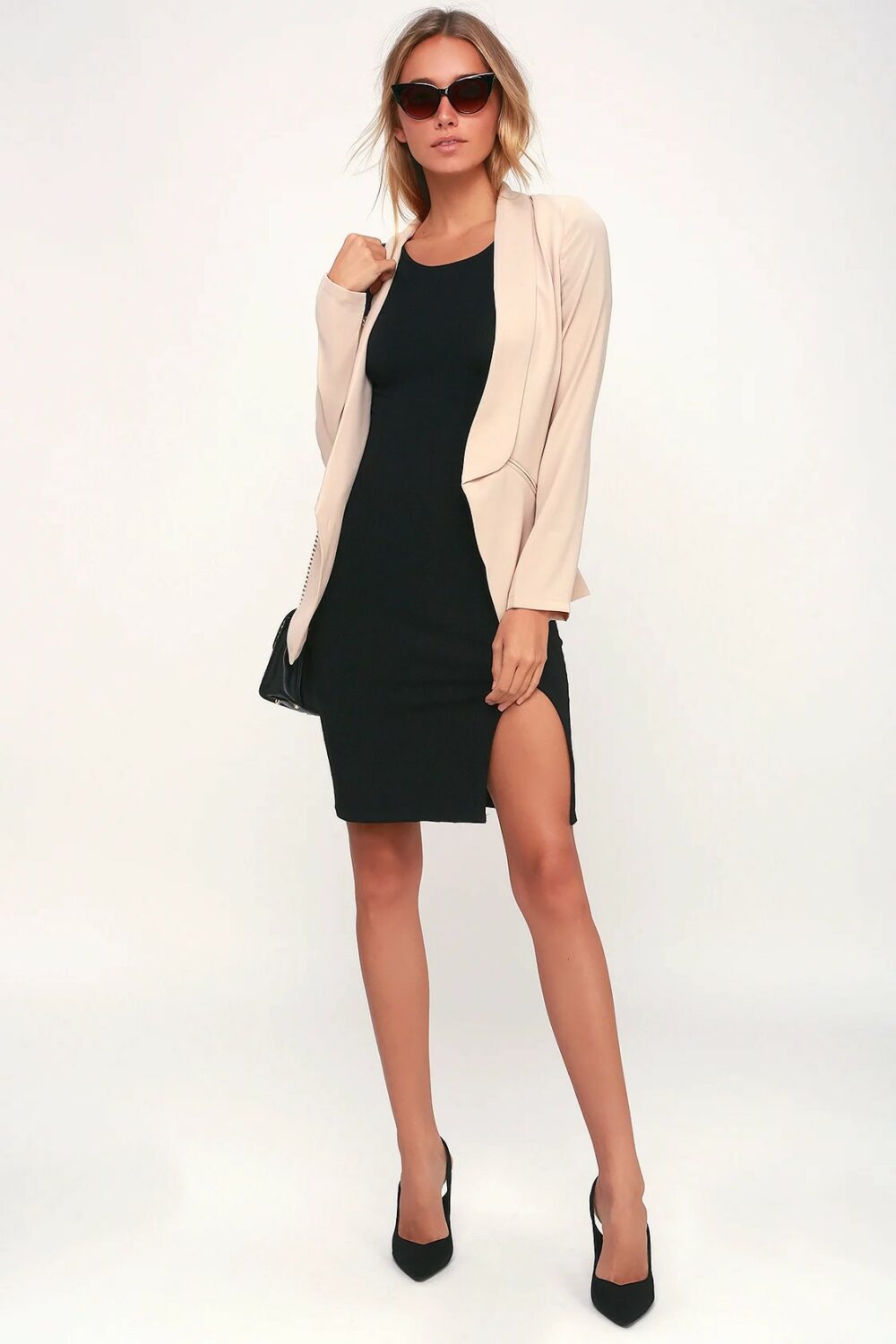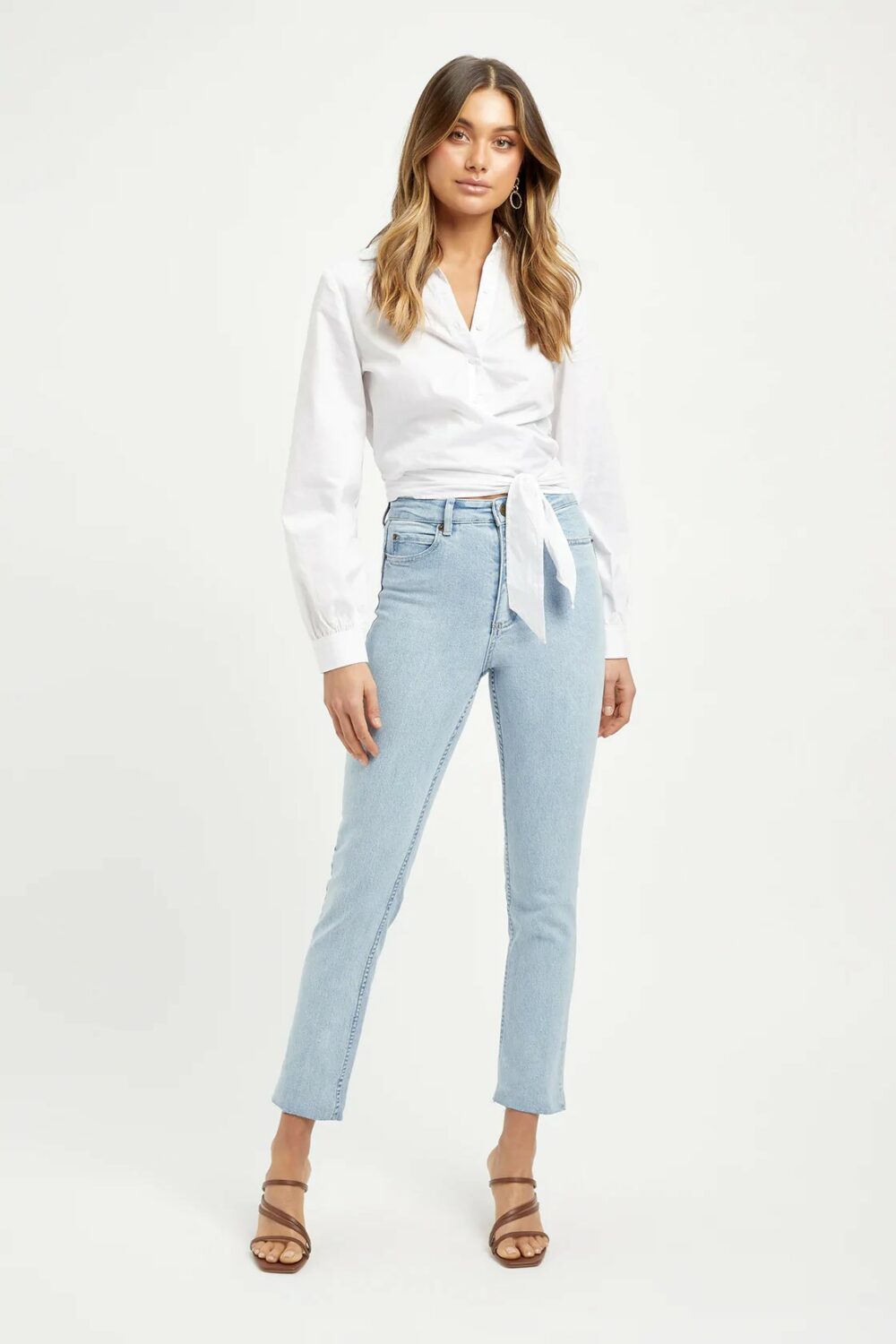It’s your own fault that companies even have mandatory office dress codes. They know if they didn’t have something explicitly written and recommended, half of you would show up in flip-flops and old, ratty jeans on a regular basis.
So now we have dressing guidelines for work. And I understand their purpose. But sometimes these guidelines are just cruel. Honestly, is it really necessary to wear pantyhose to work in these modern times? You’ll typically find this antiquated rule at companies that are so conservative they think the sight of a woman’s bare leg will render men unable to function thus causing work productivity to suffer.
But no woman should have to wear hosiery between the months of May – October.
It’s oppressive. I’m certain that most men have no idea how hot pantyhose can be. The thought of wearing a pair actually makes my skin itch. So not comfortable!
But men have their own fight with the dress code too since some workplaces still require them to wear a shirt and tie. Every. Single. Day. Which in my blog can be classified in the same category as pantyhose: Oppressive. If you’re sitting in a cube all day without meeting clients, why do you need to wrap a tie around your neck? Just plain cruel.
See also: 43 Cozy Sweaters For Fall That Will Ease You Into The New Season

How do you get around the evil office dress code?
This question is tricky territory. You don’t want to lose your income over your wardrobe. But you don’t really want to be sweltering every day in order to eat either. I usually test the waters a little bit. If I see other people going sans pantyhose, I’ll try it too. But if anyone takes the time to you remind you of the company rules, HR comes to mind, you might want to go back to nylon oppression. Hmm…entrepreneurship sounds really attractive right now.


 fashionable appearance.” class=”wp-image-843″/>
fashionable appearance.” class=”wp-image-843″/>


See also: Top 20 Women’s Sunglasses That Will Never Go Out Of Style!

Types Of Office Dress Codes
If you’re just starting out in the business world, it can be helpful to have a look at some examples of dress codes. Depending on your position and the culture of your firm, the level of formality expected in the business sector can range from casual to formal. Here we discuss different types of dress requirements and provide some suggestions for appropriate wear.
Casual Dress Code
To dress in a manner that is considered casually suggests that there is no predefined dress code, while there may be some limitations. You are welcome to dress casually, including in t-shirts, jeans, and sandals. Shorts, exposing tops, and a lot of jewelry or makeup are still not appropriate dresses.


Business Casual Dress Code
You can think of business casual as halfway between casual workplace attire and full-on business professional. A collared shirt or fine blouse with pants (not jeans) or a knee-length skirt is appropriate attire, but a tie or suit is unnecessary. Any type of closed-toe shoe is fine, while athletic shoes are not.



Business Professional Dress Code
Professionalism in the workplace is assumed. Shirts have collars and buttons, and blouses should be dignified and understated. The pants you wear to the office should be neat and in neutral colors. Dresses and skirts that fall just below the knee are acceptable office attire. Shoes with a heel no higher than 3 inches, such as flats, oxfords, or loafers, are advised.




Business Formal Dress Code
Daytime, semiformal events like business lunches and conferences sometimes recommend a “business formal” dress code. The idea of this dress code is to wear your finest office wear in a more festive form. Anything from a fitted dress to a pantsuit with heels is acceptable for a woman in this situation. For a professional appearance, stick to a modest color scheme.
Keep in mind that lengthy skirts and tuxedos are not common in the business formal setting.



Tips on Appropriate Office Dress
There are a few things to keep in mind when choosing an appropriate dress
- Observe the dress code strictly if you work in an office. Leaders in the company may dress more formally than the rest of the staff, even if everyone else in the office wears jeans and a T-shirt. You can decide to dress similarly to those who are in the position you want to be in.
- Check the company’s “About Us” page and social media pages before an interview to learn about the company’s culture. You can probably tell what people dress to work from any images or videos they have of the office. If you are still undecided about what to wear for the interview, you can always ask the recruiter or another contact you have set up for the interview for advice.
- You shouldn’t wear anything that might be deemed objectionable, such as clothing with profanity or images of violence, or shoes with heels that are four inches or higher.
Final Thoughts
It’s possible that there are a variety of office dress options available to you depending on the event or environment. If there is a dress code, be sure you follow it. If you don’t know, you can always observe how other people are dressed for inspiration. Dressing for success in your position can make others view you as a dedicated professional.
Images via: lulus/ instagram/ istock



